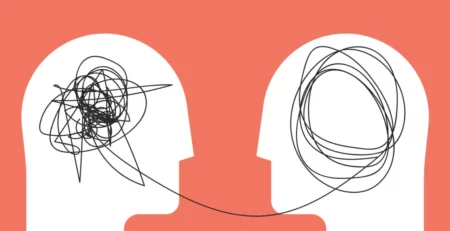Absurd TikTok videos have become incredibly popular online. These short, quirky clips often feature unexpected or bizarre content that grabs viewers’ attention. The humor and unpredictability of these videos make them perfect for sharing, leading to viral success.
TikTok has over 1 billion monthly active users, and many are drawn to the strange and funny content. Some of these absurd videos can get millions of views and thousands of shares in just a few days. But why exactly do these strange videos resonate so much with audiences?
This article explores the reasons behind the appeal of such TikTok videos and how they manage to capture the internet’s fascination.
Table of Contents
From Dance App to Cultural Powerhouse
TikTok, once dismissed as a silly app for dance videos, has become a major force in global culture. It is now one of the most visited websites, even surpassing Google in some metrics. With over a billion users worldwide, more than 100 million of them are in the United States. The average American user spends 80 minutes a day on TikTok, more than the time spent on Facebook and Instagram combined.
Two-thirds of American teens use TikTok, and 1 in 6 watch it almost constantly, according to a Pew Research Center survey. TikTok is the most-used social media app for children and the one parents most often block. While many users are under 25, the app’s popularity is growing among older adults too.
TikTok has changed how social networks operate. Unlike other platforms that focus on chosen interests and friendships, TikTok uses an algorithm to show users an endless stream of videos, learning their preferences with every view. Users don’t tell TikTok what they want to see; TikTok tells them.
This new model has influenced other major tech companies to develop their own short-video features, like Meta’s Reels and YouTube’s Shorts. TikTok’s format is reshaping the internet, with a focus on viral content over personal connections.
However, TikTok’s ownership by the Beijing-based ByteDance has led to concerns in the U.S. about privacy and propaganda. Government bodies have banned the app from official devices, and there are ongoing debates about its security risks.
Despite these concerns, TikTok creators are more focused on the immediate impacts of the app’s growth. TikTok’s ability to make anyone go viral has brought the pressure of fame to many ordinary users. As a result, the challenges once faced mainly by big influencers are now common among everyday people trying to navigate the app’s demands and risks.
Rage-Baiting on TikTok: A New Strategy for Engagement and Growth
Let’s have a look at this example. Barista and TikToker Ryan Gawlik has been deliberately provoking viewers with his coffee content. In his TikTok videos, he mispronounces espresso as “expresso” or eats a KitKat bar incorrectly, knowing it will upset viewers. This tactic has proven effective, increasing his engagement fivefold and gaining him over 350,000 new followers, bringing his total to 1.2 million. Gawlik’s approach reflects a growing trend among TikTok creators who use anger to boost views. This strategy, known as rage-farming or rage-baiting, has been a long-standing method on social media to increase user interaction.
Clicks are currency on TikTok, and it doesn’t matter how they are obtained. This method of engaging users through provocation has deep roots in media history. Social media has amplified this approach, making anger a pervasive force. Platforms like TikTok don’t differentiate between uplifting or toxic content; as long as it generates interaction, it is promoted.
Prominent creators like Ben Shapiro and Brett Cooper are often cited as rage-baiters, but the technique spans the political spectrum. Progressive creators like Aunt Karen and RX0rcist also engage in this practice. However, they argue their content serves higher purposes, like combating racism and misinformation.
Creators like Ryan Gawlik have found that purposefully making mistakes in videos can attract comments and increase views. Research supports this, showing that content eliciting strong emotional reactions, particularly anger, spreads more effectively on social media.
As engagement becomes more critical for financial success, creators feel pressured to use rage-baiting more frequently. Some creators call for better regulation of such content, especially when it spreads misinformation or harmful ideologies. However, experts believe that significant change will require action from government authorities to impose stricter regulations on social media platforms.
The concept of rage-baiting isn’t new. Traditional media, especially cable news, has long used provocative content to captivate audiences. Social media, with its real-time feedback and wide reach, has taken this to new levels. Algorithms on platforms like TikTok prioritize content that keeps users engaged, regardless of whether the engagement is positive or negative. This creates an environment where sensationalism thrives.
Researchers from Beihang University in China found that negative emotions like disgust and indignation spread faster on social media than positive ones. This phenomenon encourages creators to produce content that stirs emotions, knowing it will likely be shared and discussed widely.
The pressure to maintain engagement can lead to a “race to the bottom,” where creators continually push boundaries to provoke reactions. This environment can be mentally taxing and contribute to a toxic online culture.
Rage-baiting not only affects individual creators but also has broader implications for social media and society. It can polarize communities, spread misinformation, and create a culture of outrage. This tactic can blur the lines between genuine activism and manipulation, making it harder for audiences to discern creators’ true intentions.
Platforms like TikTok have a significant role in shaping online discourse. By promoting content that generates strong reactions, they influence what topics become prominent and how they are discussed. This power comes with responsibility, and many argue that social media companies should take more active steps to mitigate the negative impacts of rage-baiting.
Rage-baiting on TikTok exemplifies the complexities of the digital age, where engagement often trumps ethics. While this strategy can lead to rapid growth and financial success for creators, it also poses significant risks to individuals and society as a whole. Balancing the benefits of social media with the need for responsible content creation is an ongoing challenge that requires cooperation from creators, platforms, and regulators alike.

TikTok’s Impact on Comedy: Absurdism and Redefining Humor
Creating comedy on TikTok is a unique art form. With just one minute for each sketch, creators must hook viewers within seconds or risk losing their attention. The platform has popularized certain tropes—like using a tea towel to instantly portray a character as a woman or donning a specific outfit to become a recognizable stereotype, such as Karen.
Baron Ryan, a prominent TikTok comedian with over 700,000 followers, believes TikTok challenges traditional comedy punchlines. “TikTok essentially kills the punchline,” he explains. “It’s not a negative change; rather, it’s a different approach.” The platform thrives on absurdist humor, which resonates deeply in a space that values quirkiness. Ryan notes the importance of quick pacing and subtle details, where even a brief Easter egg can capture the audience’s attention. This intimate viewing experience on handheld devices surpasses the passive engagement of television.
Describing a new wave of TikTok humor, Ryan coined the term “existential chuckle.” “We’re not aiming for belly laughs,” he clarifies. “We’re aiming for moments that make you think, ‘That’s clever.'” In a world burdened with existential concerns, Gen Z has embraced this nuanced form of entertainment.
TikTok has created a diverse community of comedians who surpass the limitations of previous platforms like Instagram and Vine. Comedians like Chris Sutherland, a lecturer at USC, have used TikTok to share relatable content about school life, garnering over 78 million likes and 1.2 million followers. Their success, along with many others, shows TikTok’s ability to propel creators to viral fame.
Achieving viral status on TikTok often requires nothing more than a smartphone and a creative idea. Creators capitalize on popular sounds and memes, adding their unique twists to captivate audiences. Features like duets enable collaborative creativity, including the popular “reverse duets” that add comedic value by parodying or responding to original videos in unexpected ways.
Many TikTok comedians are young adults and teenagers who turn everyday thoughts into humorous, relatable content. Their videos span a range of comedic styles, from satire and irony to dark humor and absurdity, that resonate across diverse audiences. Current events, popular music, and trending topics frequently inspire TikTok’s comedic trends, keeping content fresh and engaging. In an era marked by boredom and isolation, Gen Z turns to TikTok as a haven for their distinctive sense of humor.
The Rise of Trendbait on TikTok
TikTok has become a breeding ground for new terms. They are often coined by creators hoping for viral fame. This rapid creation of slang isn’t always necessary or relevant but emerges from videos by people inventing terms like “orange peel theory,” “microcheating,” or “loud budgeting” just for the chance that they might catch on.
Language on TikTok is expanding rapidly, but not always for meaningful reasons. Creators invent terms hoping they will go viral, like the video that coined “dinner and couch friend,” which amassed over 100,000 likes. This trend has become so prevalent that some TikTokers now parody the phenomenon of creating new phrases for the sake of attention.
These viral terms are a testament to TikTokers’ marketing genius. Unlike the past, where trends came from magazine editors or fashion designers, today’s viral phrases often come directly from TikTok. However, these phrases are created not for natural communication but for the potential clout they bring. This shift shows a move away from organic slang, which typically spread within specific communities, to a more calculated approach aimed at garnering attention.
The quest for online clout has led to a constant churn of new terms. Some examples include “polywork” for working multiple jobs, “almond mom” for a diet-obsessive parent, and “weekend effect” for wasting weekends. This rapid cycle can be exhausting for users who are bombarded with new slang daily. Even so, many TikTokers continue to coin new phrases, hoping to become the next viral sensation.
Journalists also play a role in amplifying these trends, hoping to ride the wave of online virality. Terms like “beige flag” and “quiet quitting” are examples of how media coverage can boost these trends further. Publications and culture writers often find themselves reporting on these new phrases to stay relevant and capitalize on existing buzz. This phenomenon can be described as “trendbait”—a rush to create or report on new slang in the hopes of gaining attention.
Unlike slang that naturally evolves within communities, these new TikTok terms are often created with the intent to spread widely and quickly. They aren’t always useful or enduring but they serve the immediate purpose of generating views and engagement. TikTokers, aware of how social platforms profit from viral content, are savvy about using their creations for maximum impact, even if it means the terms are short-lived.
While some coined phrases on TikTok might resonate and stick around, many others quickly fade into obscurity. Yet, the cycle of creating and promoting new terms continues unabated, driven by the desire for online recognition.

Relatability and Escapism
TikTok’s absurd videos have become a popular escape from the stresses of everyday life. The platform’s unique style of comedy, which often includes bizarre, unexpected, and surreal elements, offers viewers a brief respite from reality. This form of escapism is particularly appealing in today’s fast-paced and often overwhelming world.
Absurdist content on TikTok distracts viewers from their worries by engaging them in humor that is so detached from reality that it leaves no room for anxiety. When watching a video where someone transforms a mundane task into a comedic spectacle, viewers can momentarily forget their own problems. The short, punchy nature of TikTok videos provides an escape that is quick and easily accessible, fitting neatly into breaks throughout the day.
Viewers find comfort in TikTok’s absurd content because it breaks the mold of traditional media that often reflects societal pressures and expectations. Instead of polished perfection, TikTok offers chaotic, imperfect, and genuinely funny content that doesn’t try to be more than it is. This detachment from reality is a relief for viewers who are tired of aspirational content that can feel unattainable and demoralizing.
Absurd videos resonate because they embrace the unexpected and the nonsensical. This unpredictability keeps viewers engaged and curious about what will happen next, creating a sense of anticipation that is both entertaining and comforting. In a world where much is uncertain and out of control, the controlled chaos of TikTok absurdism provides a predictable yet varied form of entertainment.
The relatability of TikTok’s content also plays a significant role in its appeal. Unlike traditional media, which often features highly curated and edited representations of life, TikTok videos are more raw and authentic. Viewers see people like themselves creating content in their homes, with minimal production value but maximum creativity. This authenticity makes viewers feel connected to the creators and reassures them that they are not alone in their experiences and feelings.
This blend of relatability and escapism is at the heart of TikTok’s success and its impact on modern internet comedy.
The rise of TikTok has brought joy and escapism to millions, but it has also sparked important conversations about data privacy and content control. Despite initial concerns about its Chinese ownership, TikTok has become a staple in many lives, known for its unique algorithm and diverse content. This platform has empowered a new wave of self-expression and democratized content creation, allowing voices that were previously marginalized to gain prominence.
As TikTok continues to grow, it challenges the dominance of traditional media and big brands, offering a space where anyone can go viral and make an impact. This meritocratic approach to fame signifies a shift in the digital landscape, one where the power of the individual creator can rival that of established giants. Whether this change is ultimately positive or negative remains to be seen, but it undeniably marks a new era of digital democracy and innovation.
Take a moment to explore the app and see the variety of content that’s capturing the internet’s attention. Visit our website for more information.
For more similar blogs, visit EvolveDash today!
FAQs
- How does TikTok’s algorithm make absurd videos go viral?
TikTok’s algorithm promotes videos that get high engagement, like comments and shares, even if the content is quirky or strange. It learns what users like, making absurd videos more likely to appear on more feeds.
- What is rage-baiting on TikTok?
Rage-baiting is when creators intentionally provoke anger or strong reactions from viewers to boost engagement and views, often by making mistakes or saying something controversial.
- How do creators balance engagement and responsibility?
Creators try to entertain without spreading harmful content. However, some use provocative tactics to gain attention, which can negatively impact online culture.
- Why is absurd humor popular on TikTok?
TikTok’s short videos and unique algorithm make absurd humor more engaging. It’s quick, unexpected, and doesn’t follow traditional comedy, making it more shareable.
- Can absurd videos provide an escape for viewers?
Yes, absurd content on TikTok offers a break from daily stress by providing light-hearted, chaotic humor that doesn’t take itself seriously. It allows viewers to disconnect from reality.



















